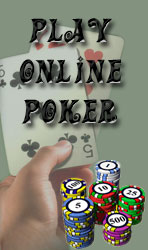Pokerwiner.com → Lessons of poker
Adjusting Properly to the Structure
The important thing is to adjust your play to the betting rules, the betting limits, and the ante structure with which you are confronted.
This ability to adjust is one of your greatest edges against the good but nontheoretical player.
It takes quite a while for the nontheoretical player to find instinctively the correct method of play in an unfamiliar structure.
In the meantime, that player makes costly mistakes.
For example, the $15-$30 holdem game that used to be played at the Golden Nugget in downtown Las Vegas attracted some of the toughest holdem players in the country.
However, as good and as solid as they were, most to them didn’t realize that the structure of this game, compared to that of the more common $10-$20 holdem games they knew, necessitated a change in strategy.
In the $10-$20 games there is ordinarily a 50-cent ante and a $5 blind.
It costs $5 to come in and another $5 to raise.
However, in the $15-$30 Golden Nugget game, there was no ante, but there were to blinds - $5 and $10.
It cost $10 to come in, and to raise it cost another $15 for a total of $25.
Thus, in this poker game it cost considerably more to come in, relative to the betting limits, that it did in the $10-$20 game especially when there was a raise.
When you call the $5 blind in the $10-$20 game, you are investing half of the $10 bet on the flop; but when you called the $10 blind in the Golden Nugget $15-$30 game, you were investing two-thirds of the $15 flop bet.
When you raise (or call a raise) in the $10-$20, you are investing as much as the bet on the flop – namely, $10; but when you raised or called a raise in $15-$30, you were investing almost twice as much as the bet on the flop -$25.
Additionally, when you call the $5 blind in early position in $10-$20, you risk being raised only the amount of the initial bet; but when you called the $10 blind in $15-$30 in early position, you risked being raised another
$15 – one-and-a-half times the initial bet.
The effect of these structural changes in the $15-$30 game, which made it more expensive to come in, was that you had to play very tightly and play only hands that didn’t depend on high implied pot odds.
Hands like ace, kind and big pairs went up in value, while hands like 6, 7 suited and baby pairs, which are playable in $10-$20, went down in value.
These differences were so significant that anyone who understood them and adjusted to them properly had an edge in the $15-$30 holdem over players who may have been great in $10-$20 but who insisted on playing the same way in the $15-$30 game.



